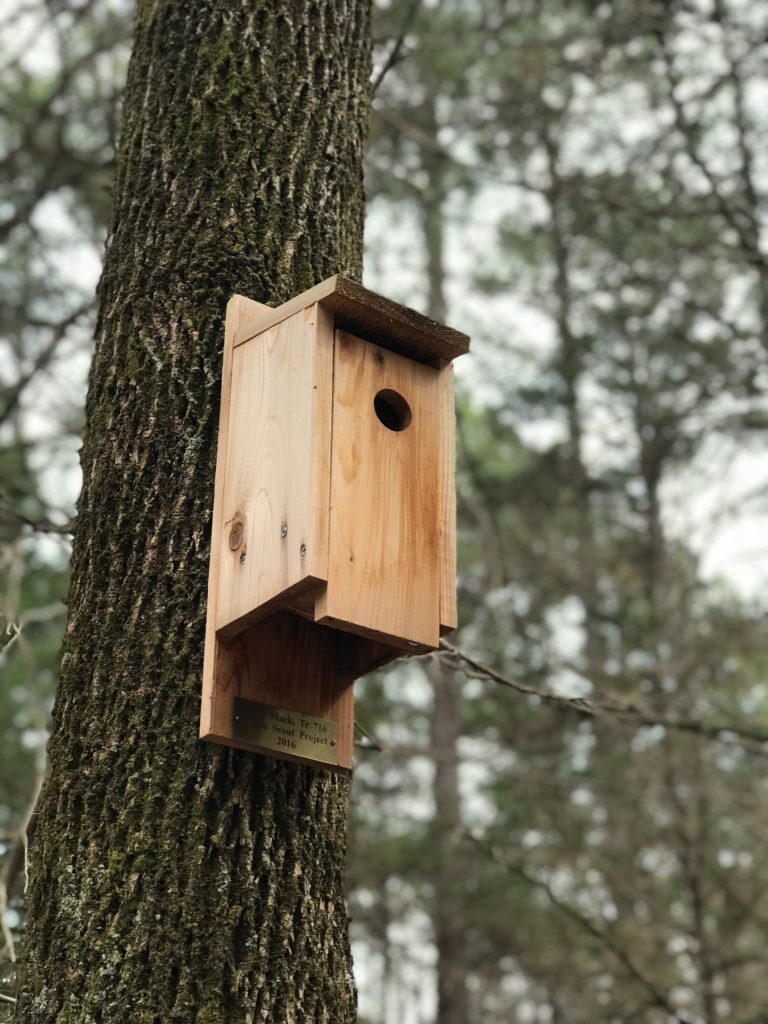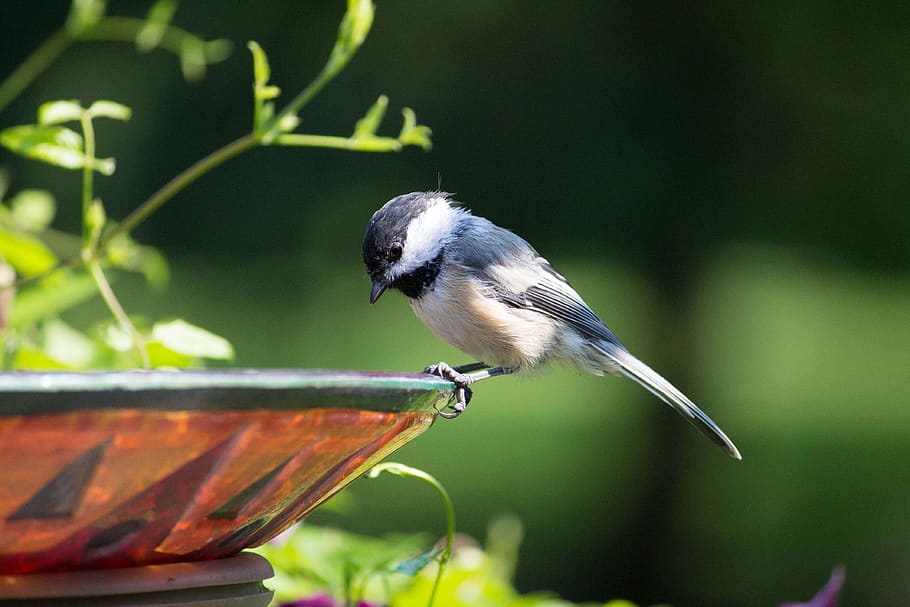Nesting season can vary depending on where the bird lives, it’s species, and its migrating pattern—but in North America, most birds nest in the springtime. This is a particularly vulnerable time for birds, as they work to find a spot to build their nest and feed their young. What can we do to help? Here are three things you can do in your own backyard to make the nesting process easier (and safer) for our feathered friends.
#1. Provide Nest Boxes
Putting a nest box in your yard is a great way to provide a safe place for birds of all kinds to lay their eggs. In the Big Bear Lake area, you might find wrens, bluebirds, and American kestrels using your nest box. But when and where should you put your nest box?

When to put up your nest box
Ideally, you should put up your nest box in the autumn or winter, which gives birds a place to shelter during the cold season and time to investigate it as a potential future nesting spot. But don’t worry that you’re too late! Birds are often looking for nesting spots in February and March (and even later, for some bird species), so you still have time. And putting up a nest box any time of year is better than no nest box. Just be patient while waiting for the new family to move in.
Why the size of the entrance matters
Buying or building a nest box? You’re going to want to consider the size of the entrance—it should be big enough for the bird to enter and small enough to keep out predators. Also, different birds need different entrance sizes, so here’s a little help from the Cornell Lab of Ornithology, who put together this helpful chart:

Where to put your nest box
Again, it depends on the bird species. Typically, nest boxes are installed on the outside of your home, or on a post or tree. A good rule of thumb, however, is to place it in a location sheltered from the wind and rain. You also want to ensure that the nest box doesn’t get full midday sun, as baby birds can overheat.
The height of the nest box also varies by bird species; some birds will nest in boxes 3 to 6 feet off the ground, while others (like woodpeckers) look for nests up to 20 feet high. The Cornell Lab of Ornithology has a handy interactive tool that tells you where and how high to place your nest box based on the birds in your area.
#2. Make Your Yard an Ideal Nesting Spot
When it comes to creating a nesting haven in your yard, there are a few things to keep in mind. Just like humans, birds look for safe places to rear their young, and this includes covered areas that are safe from the elements and from predators. Nesting birds can often be found in hedges, shrubs, and trees, so inspect your foliage carefully before you decide to spring clean your garden.

If you’re deciding what to plant in your garden, research what plants the birds in your area are likely to nest in. Often, nesting birds choose shrubs like barberry, hawthorn, rose, and rhododendron. In Big Bear Lake, home of the Chirp Nature Center, birds often choose juniper bushes as well as manzanita, serviceberry, and black and white sage shrubs as their nesting spots.
A birdbath is also a great amenity for your bird guests. Make sure to not overfill it; birds should be able to perch on the edge and wade in without trouble, so two inches of water is plenty. Place large stones on the bottom of the birdbath to allow birds to get their footing as they drink and bathe.

#3. Watch Out for Nest Threats!
Whether in a nest box, shrub, or tree, if you have nesting birds in your yard, keep an eye out for predators! In fact, the worst predator can come from within your house—keep cats inside or away from nesting areas, as they are one of the biggest threats to birds.
Other nest threats to keep an eye out for are raccoons, snakes, squirrels, and other small animals. But perhaps the biggest threat to bird nests are…other birds! Blue jays, crows, magpies, and starlings are among the list of larger birds known for eating eggs and chicks. How to deter these nest pests? Install a predator guard on nest boxes mounted on poles, and avoid leaving food and garbage out that will attract animals.
But when it comes to diabolical plots, the cowbird is a nest predator like no other. The female cowbird will damage or remove an egg from a nest and replace it with her own, leaving the nest-makers to raise their chicks. Check it out in this video:
To deter cowbirds from your yard, make sure to clean up spillage from your bird feeders—especially if it includes cowbird favorites like sunflower seeds, cracked corn, and millet. When cowbirds are around, avoid visiting the nesting area, as you can inadvertently lead them right to the nest. But if you’re thinking of taking things into your own hands to deter cowbirds, keep in mind that they—like all US migratory birds and their eggs and nests—are protected by the Migratory Bird Treaty Act.
Join Chirp for more nature-filled events
Check out Chirp’s upcoming events and be sure to join us for nature-filled fun and egg-citing opportunities to better your bird brain.



One comment
Great information! I didn’t realize that about cow birds! I have lots to learn, thank you for being such an informative source!